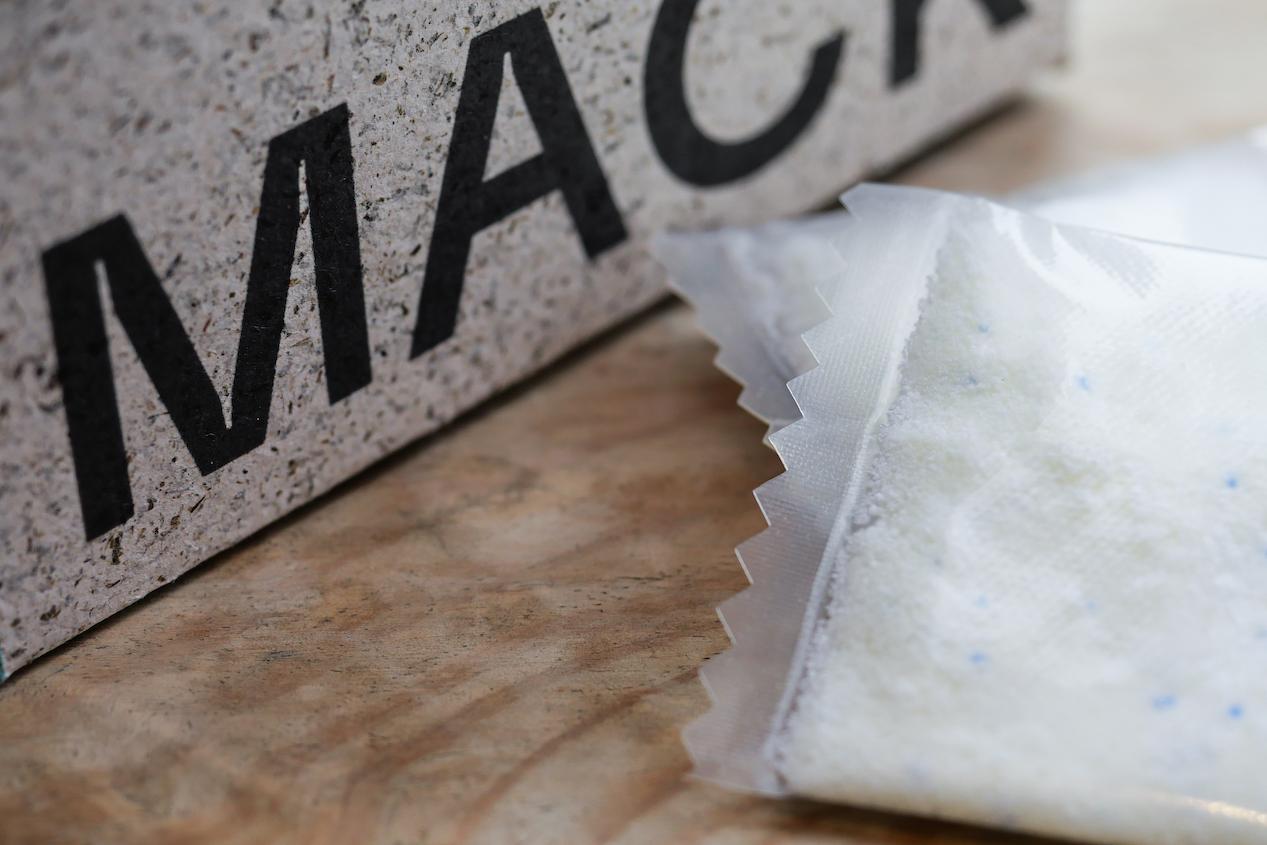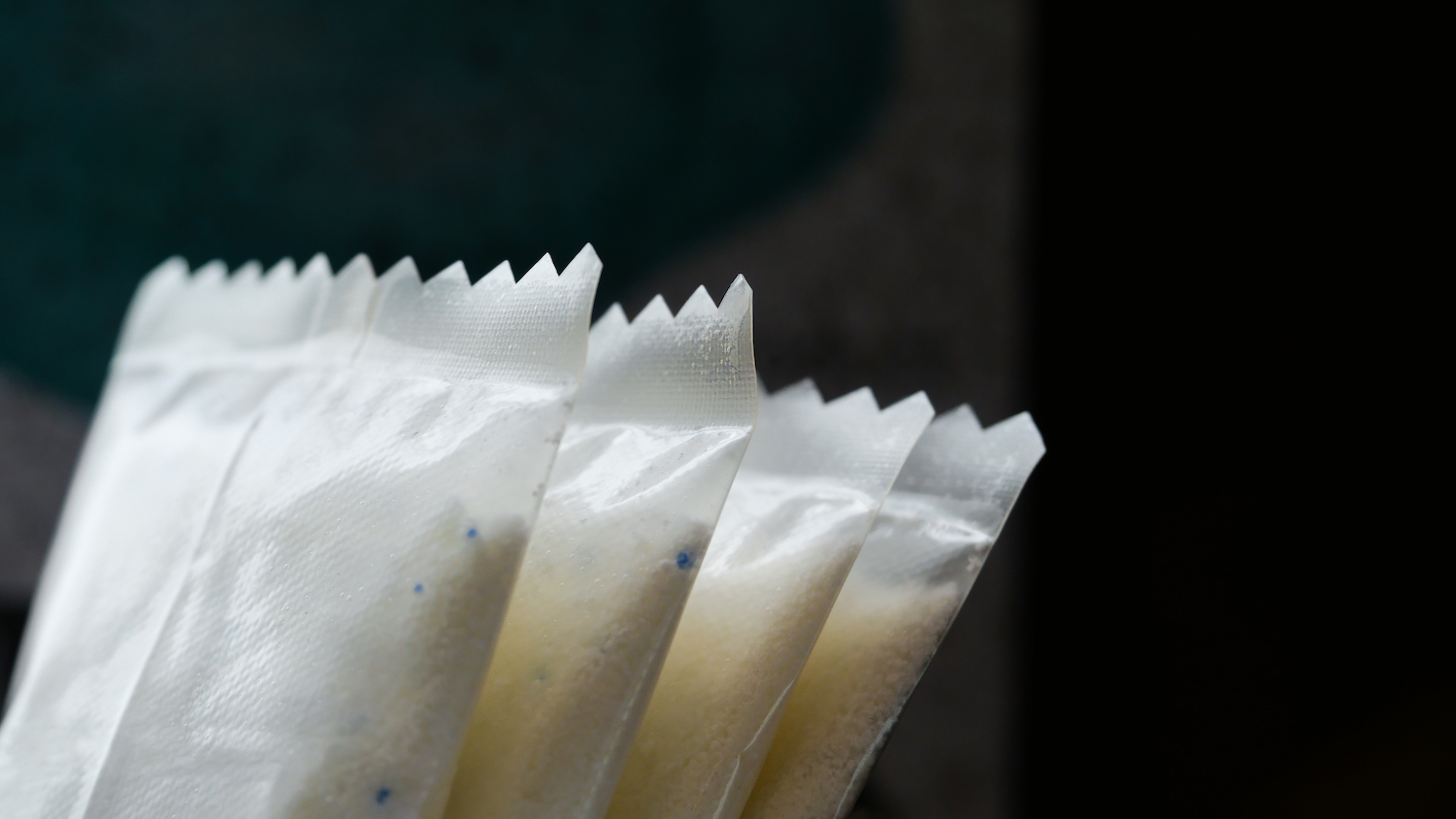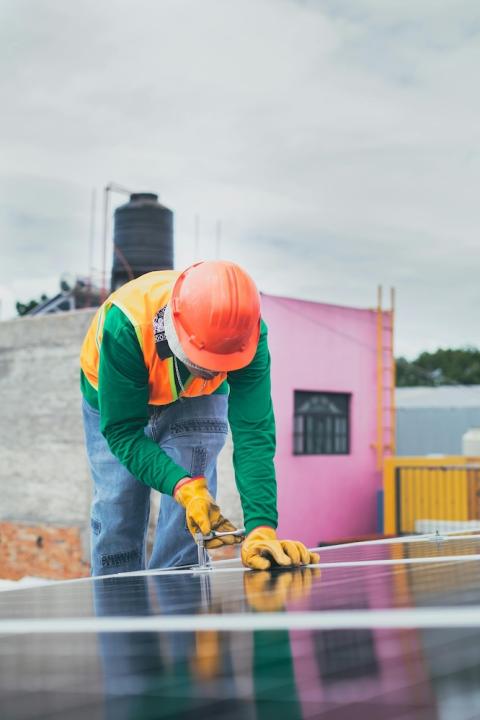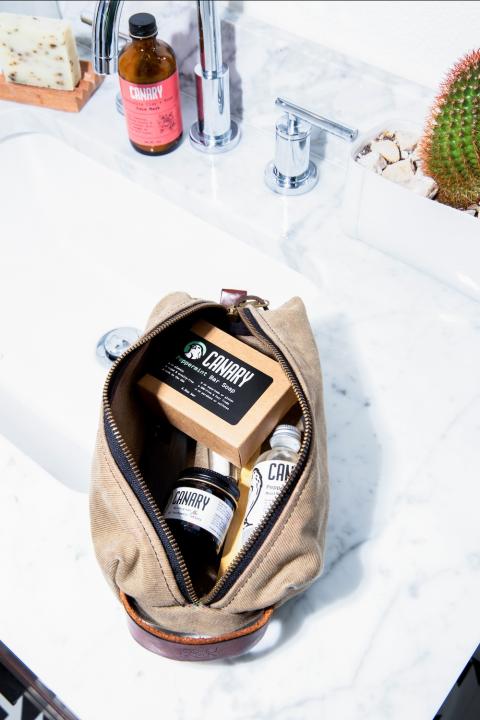
There’s no denying the convenience of laundry and dishwasher pods made with water-soluble plastic. But the price of that convenience adds to the microplastic pollution accumulating in the environment and in our bodies. However, a solution to this part of the growing global plastic problem could be at hand.
Notpla, a startup based in the United Kingdom that makes plastic-free packaging from seaweed and plants, is partnering with Mack, a U.K.-based environmentally-friendly cleaning brand, to create sustainable detergent sachets for washing laundry and dishware — similar to the plastic pods we’re used to seeing on store shelves.
Detergent pods have a plastic problem
“This is our first commercial partnership with Mack to introduce this groundbreaking water-soluble film for the home and laundry care market, revolutionizing traditional packaging methods,” Cécile Roques, films product manager for Notpla, told TriplePundit in an email. “The collaboration represents a significant step toward sustainable alternatives to PVA and PVOH.”
Laundry and dishwasher pods are typically made of polyvinyl alcohol, a synthetic plastic material also known as PVA or PVOH. In the United States alone, 75 percent of the 17,200 metric tons of PVA used for these pods each year ends up in the environment as plastic pollution, according to a recent study.
“It’s easy not to think about PVOH as a plastic. Unlike much of the plastic we consume, it dissolves during use and leaves no visible residue,” Roques said. “We have often been told that these are plastic-free solutions. However, this is not true. PVOH is made from fossil fuels, and many studies have shown that they leave microplastics or plastics residue in the environment after dissolution.”
Seaweed is the secret ingredient
Notpla Film, the product used for the plastic-free sachets, is made from seaweed, plant and mineral extracts. It degrades naturally in four to six weeks without the need for industrial composting or special conditions, leaving no trace behind, Roques said.
“Our product does not disguise plastics,” she said. “Notpla packaging is made from natural materials and will dissolve or break down back to a natural state without human intervention, a key stepping stone to protecting our planet.”
And seaweed, one of the planet’s most abundant sources of biomass, has the potential to not only help reduce microplastic pollution but also capture carbon dioxide, one of the leading causes of climate change, said Pierre Paslier, co-founder of Notpla.
“In the fight against climate change, seaweed could be a surprising — but vital — weapon,” Paslier told the Carbon Herald. “Giant kelp’s biomass, for instance, increases by 20 percent per day, its production does not compete with food crops, and requires no fertilizer or fresh water to produce.”

Making the plastic-free swap easy
Notpla has developed various materials from plant-based ingredients since 2016. Its team has grown since then, and the bulk of its investment has been in research and development and manufacturing.
“At this stage, our team is full of expert knowledge in the field of regenerative materials, so our ability to foresee and troubleshoot hurdles has grown a lot,” Roque said. “We have elaborated the films from scratch, so we know the material extremely well and are aware of the material properties and barriers.”
Notpla wants its products to fit existing packaging machinery so manufacturers can avoid new capital expenditures when adopting its packaging solutions and easily scale to the size of the market.
“In the case of films, we need to meet the demands of huge markets and are working with brands who are selling direct-to-consumer,” Roque said. “Adapting natural materials to fit plastic production lines is not easy, and it took us tens of iterations to solve the many technical challenges we faced.”
Notpla is one of three companies that use seaweed to design sustainable, biologically degradable alternatives to thin-film plastic that received the 2023 Tom Ford Plastic Innovation Prize after a rigorous nine-month testing phase. The film was tested in soil, seawater and even a simulated whale gut, Roque said. “They aimed to look at the biological degradation at end-of-life and product performance of the films."
Plastic-free products that use Notpla Film will soon be available on Mack’s website for consumers to buy directly. “Within the year we will be launching Notpla Film with more consumer brands in the homecare and laundry market, which will be available through various retailers,” Roque said. “Toward the end of the year, we will begin to launch in different markets and applications as well, including dry food, such as herbs and spices, and cosmetics and personal care.”
While products using Notpla Film are currently only available in the U.K., the company is working with a number of U.S. partners to launch in the near future, she said. The rest of Notpla’s product range, such as its coated boxes, are widely available in the U.K., Ireland, Germany, Austria, the Netherlands, Poland, Spain and France through the food delivery platform Just Eat.
“Notpla’s primary goal is to replace as much single-use plastic as possible. We encourage companies to invest in finding the most planet-friendly formulations possible, but their current formulations can work with our films,” Roque said. “Any business wanting to make improvements on their current practices and showing real action is a business we want to work with.”
Images courtesy of Notpla

Gary E. Frank is a writer with more than 30 years of experience encompassing journalism, marketing, media relations, speech writing, university communications and corporate communications.














